Looks like Sime Darby Auto ConneXion (SDAC) aka Ford Malaysia has seen a positive growth in their Ford Ranger sales figures as they celebrate an increase of 12% in Q3 compared to the previous quarter between April and June 2019. (more…)
Looks like Sime Darby Auto ConneXion (SDAC) aka Ford Malaysia has seen a positive growth in their Ford Ranger sales figures as they celebrate an increase of 12% in Q3 compared to the previous quarter between April and June 2019. (more…)
Some years back, Hakan Samuelsson, President & CEO of Volvo Cars declared that the company is determined to be the first premium carmaker to move its entire portfolio of vehicles into electrification. After starting with hybrids, the plan was to have fully electric models by the end of this decade and with three months remaining, the company has rolled out the XC40 Recharge, its first ever fully electric car and the first model to appear in its brand-new Recharge car line concept.
First in the fully electric Volvo family
The XC40 Recharge, based on the XC40 SUV, is the first of a family of fully electric Volvos. Over the next 5 years, the Swedish carmaker (part of China’s Zhejiang Geely Holding Group since 2010) will launch a fully electric car every year. This will enable it to make all-electric models account for 50% of global sales by 2025, with the rest being hybrids. Recharge will be the umbrella name for all Volvos with a fully electric and plug-in hybrid powertrain.
The new XC40 Recharge, with all-wheel drive and 408 ps, has a claimed range of over 400 kms on a fully charged battery pack. The battery pack can be recharged to 80% of its capacity within 40 minutes but only if a fast-charger system is used.
Fully powered by Android
An Android-powered infotainment system is fully integrated with Volvo On Call, the company’s digital connected services platform. The Volvo Car Group is the first company to team up with Google on integrating an infotainment system powered by Android, with the Google Assistant, Google Maps and the Google Play Store built-in. The new system offers full integration of Android Automotive OS, Google’s open-source Android platform, with real-time updates to services and automotive apps created by the global developer community.
“We are finally giving you the same experience in your car that you’re used to on your phone, but adapted for safe interaction while driving,” said Henrik Green, Chief Technology Officer at Volvo Cars. “And by introducing over-the-air updates for everything from maintenance to completely new features, the car can stay as fresh as your other digital products, always with the latest and greatest features.”
To meet the anticipated growth in demand for its Recharge models, Volvo Cars will triple production capacity for electrified cars and will, as of next year, prepare a Designer’s Choice selection of popular Recharge models, offering the potential for radically reduced delivery times.
It may be hard to believe but the British Touring Car Championship (BTCC) started as far back as 1958 – 61 years ago – and only Formula 1 and America’s NASCAR series have longer histories. It’s a rave series that has gone from strength to strength, becoming an event that major manufacturers must have a presence in.
It appears that Goodyear also see the BTCC as being important and has announces a return to UK motorsport by becoming the new sole tyre supplier to the championship from 2020. The decision comes with a view to enhancing Goodyear’s brand within the motorsport and ultra-ultra-high-performance (UUHP) segments.
2019 witnessed Goodyear’s return to these segments with the launch of its Eagle F1 SuperSport range of road tyres and successful return to European and International sportscar racing in the FIA World Endurance Championship (WEC).
Platform for demonstrating tyre technologies
Goodyear has chosen the BTCC for the second step of its racing comeback as it provides a strong platform for demonstrating tyre technologies on a wide range of saloon cars as well as providing the right marketing platform to reach high-performance car enthusiasts within the UK.
“The recent launch of Goodyear’s Eagle F1 SuperSport range and relaunch into motorsport shows how the brand is applying itself to a broader range of initiatives within the ultra-high-performance automotive sector,” said Motorsport Director at Goodyear, Ben Crawley.
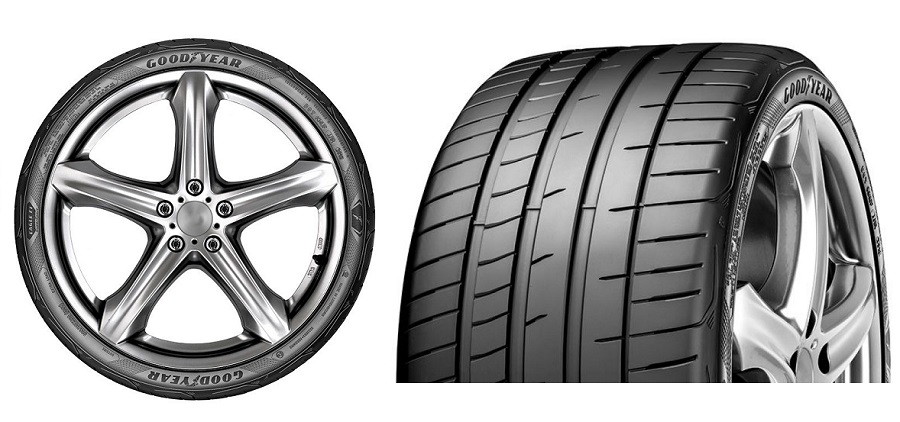
“The BTCC is one of the best-loved, most famous motor racing championships in the world and it will provide a great opportunity for Goodyear to get close to the hearts and minds of motorsport enthusiasts. We are thrilled to be partnered with the championship from 2020,” he added. ”The decision to become the sole tyre supplier to BTCC forms part of a broader strategic marketing plan for the company.”
As tyre supplier, Goodyear will meet the current regulations by supplying tyres with the size of 265/660 R18. Three tyre compounds (Soft, Hard and a specific compound used at Thruxton only) – Prime and Option will be available to teams.
An all-new Toyota Yaris has just had its world premiere today but before you call up the Toyota salesman to cancel your order, you should know that the new model won’t be available in Malaysia or even the neighbouring countries. It is a new model for Japan and Europe and the platform is different from the one sold in Malaysia. The different designs also take into account regional preferences more specifically. Although manufacturers would be happy if customers in every market around the world have same tastes and ‘one size can fit all’, so to speak, the reality is that there needs to be some differentiation if a model is to be well accepted.
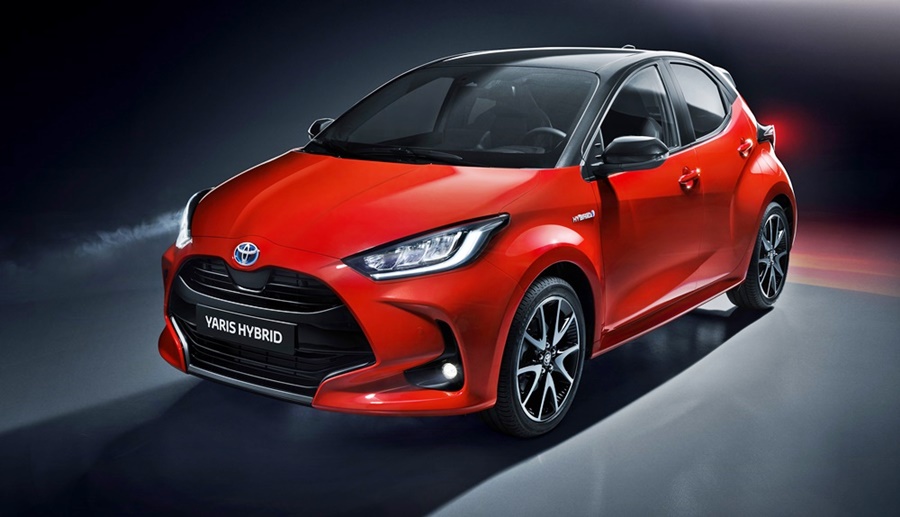
The Yaris for the Malaysian market (assembled at UMW Toyota Motor’s own plant in Selangor) is of a fairly new design so it is quite current whereas the other Yaris has had its own model cycle and it’s time for a full model change to the fourth generation. The first deliveries will start in Japan from mid-February 2020 and progressively launched in other markets. The new car will continue to be made at Toyota’s global production hub in France.
TNGA and new powertrains
The new Yaris, like the latest Corolla, uses Toyota’s New Global Architecture (TNGA), specifically the GA-B platform. The new platform provides both superior handling stability and a high-quality ride by shedding 50 kgs in vehicle weight compared to the conventional model, increasing torsional rigidity by at least 30%, and lowering the centre of gravity by 15 mm.
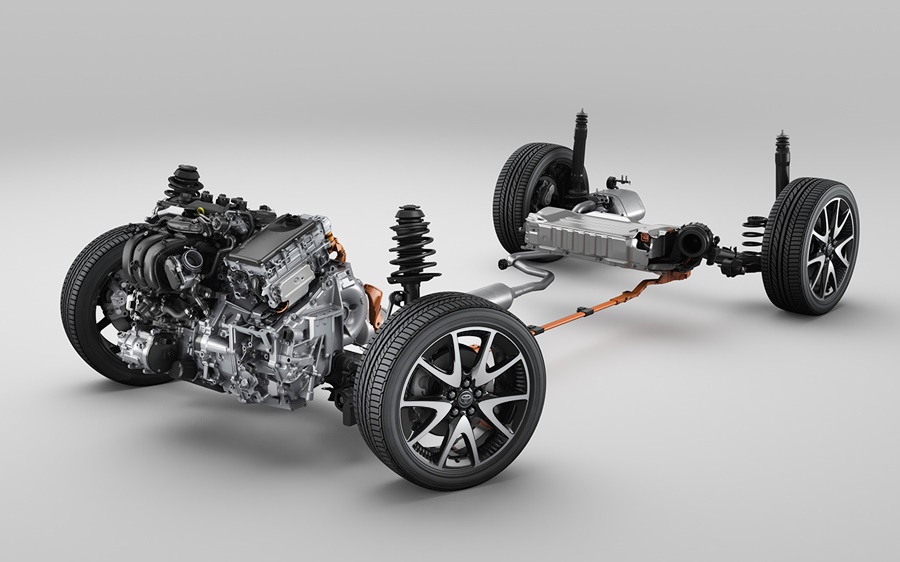
It also sees the first use of the new 3-cylinder, 4th generation hybrid system with the Dynamic Force engine, particularly important for the European market. In addition to pursuing Toyota’s ongoing goal of developing the world’s highest level of fuel efficiency for a hybrid vehicle, the new Yaris is offered with E-Four (electric four-wheel drive system), a first for a Toyota compact car.
Besides the newly developed a 1.5-litre 3-cylinder Dynamic Force Engine, there is also an enhanced 1.0-litre 3-cylinder engine available for certain markets. Both engines use a CVT, with the bigger one being a Direct Shift-CVT unit with a launch gear adapted to the new engine.
More advanced safety features
Continuing the quest to bring accidents down, Toyota has equipped the Yaris with new advanced features such as an advanced parking support system (a first for a Toyota vehicle) and the latest Toyota Safety Sense which has been expanded to detect oncoming cars when turning right at an intersection and pedestrians crossing the street when turning right or left.
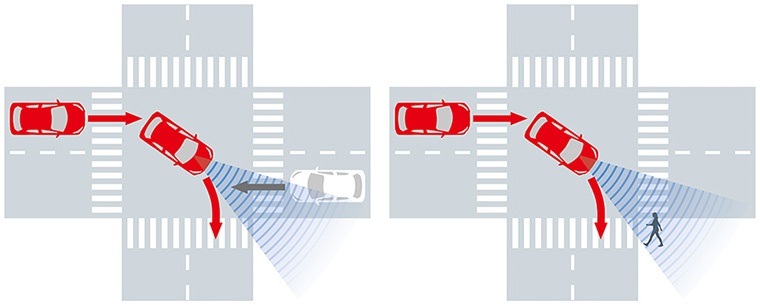
In addition to Advanced Driver Assist Systems, the new Yaris has been developed to achieve best occupant protection in the forthcoming stricter European standards for 2020. For instance, to better protect occupant in case of side impact, the new car will be the first model in the compact segment to introduce a centre airbag. The additional airbag is located between the two front seats and can help reduce injuries to the front occupants during side impacts.
“This marks the 20th year since the first Yaris debuted, so we wanted to build a new-generation compact car that goes far beyond customers’ preconceptions about class by building on the strengths of the Yaris as a compact car while revamping the platform, powertrain, and all other components. Compact cars are driven by many people, so offering a pleasurable drive was a priority, but it also prompted us to use the Yaris as the starting point of cars with the world’s highest level of fuel efficiency and secure safety technology,” said Chief Engineer Yasunori Suezawa who led the team that developed the new Yaris.
Intelligent interior packaging
Compact cars require intelligent packaging to maximise space and occupants will find the clutter-free interior offers a spacious and comfortable atmosphere. The thin cross-section of the instrument panel gives an impression of width which, together with the small diameter of the steering wheel, makes the cabin feel more spacious and sporty.
Various features are adopted to express the quality of a higher class interior, including hood-less dual digital TFT meters (adopted by Toyota for the first time) and a soft instrument panel, as well as a wider console and increased storage space.
Also being offered on a Toyota model for the first time are Turn Tilt Seats (shown above). A mechanism in the front seats makes it easy for the driver and front passenger enter and exit the car by rotating the seat and tilting it. This facilitates entering and exiting the vehicle by passengers wearing a skirt or kimono and supports those with back pain or low muscle strength.
While it won’t be sold in ASEAN markets (unless Toyota decides to unify the two versions), perhaps some of its new features may eventually be adopted in the Yaris sold in the region. This is the usual process where certain new features appear in the more advanced markets that can accept the initial higher cost, and then as the production costs drop with rising volumes, they can be offered in price-sensitive markets like Malaysia.
Bridgestone Tyre Sales (Malaysia) Sdn Bhd is proud to announce their latest appointment of Mr Michael Ching Wing Kay as the new Managing Director. Mr Michael Ching will be the leading man in terms of sales and operations divisions for Bridgestone Malaysia to help solidify the brand’s presence amongst Malaysians with his 30 years of experience in general management, manufacturing operations, as well as sales and marketing experiences. (more…)
Looks like Porsche has something to celebrate about as they report an increase of sales figures in the first three quarters of 2019. The premium car manufacturer has successfully delivered 202,318 units from January until September 2019; an increase of 3% compared to the same period of last year (196,562 units back in 2018). (more…)
For many driving enthusiasts, a lap of the legendary Nurburgring Nordschleife circuit in Germany is something they must do at least once in their life. Opened in 1927, the engineers designed a 28.3-km Nurburgring circuit with various route variants, including the then 22.8-km Nordschleife. It is estimated to have cost 27 million euros converted to today’s monetary value.
Nicknamed ‘The Green Hell’ by 3-times F1 champion Jackie Stewart, the Nurburgring Nordschleife circuit is used for certain world championship events, especially endurance races. On days when there are no races, the circuit is open to the public who, after paying a fee, of can drive their own cars around during the ‘tourist sessions’. There are all sorts of cars – as well as vans and even buses!
For those who want an extreme experience but don’t have the necessary skills for high-speed driving, there are also ‘taxi rides’ available. Professional drivers will be at the wheel and there’s a range of supercars to choose from.
First zero-emissions performance SUV for taxi rides
But until now, there has never been a fully-electric taxi at Nurburgring and Jaguar’s RACE eTAXI service with the I-PACE performance SUV is the first. The public can now experience the sportscar performance of the all-wheel drive I-PACE around the 20.8-km, 73-corner track. The zero-emissions SUV has a claimed acceleration time from 0 – 100 km/h in 4.8 seconds with its 400 ps/696 Nm powertrain that is fed energy from a 90-kWh lithium-ion battery pack.
One lap as a co-driver in the I-PACE will cost €149 (about RM690) and you are provided with a helmet and drinks. The introduction of the first all-electric RACE eTAXI is another step in Jaguar’s electrification strategy as it enables more people to experience Jaguar’s I-PACE first-hand.
If you happen to be at the Karma Automotive flagship store in Newport Beach, California, they’re now accepting cryptocurrency like Bitcoin as a form of payment. The company’s main focuses are creating super luxurious electric supercars and high-tech incubators for the rich and famous. (more…)
Following the launch of the new Renault Megane R.S. 280 Cup EDC by TC Euro Cars (TCEC), the Renault Sport Track Day made a comeback with a twist – it was run as a night session at the Sepang International Circuit. During the session, a total of 30 Renault Sports owners tested their personal skills and car performance as they tried to complete as many laps as possible within the allocated time.
With safety being a top priority for TCEC and Renault, only experienced drivers were allowed to drive on the track by themselves while first-time track drivers were accompanied by a professional instructor.
TCEC also conducted a timed run of the Megane R.S. 280 Cup EDC. The new model bettered the previously recorded lap time of the Megane R.S. 265 Cup by 3 seconds – 2:38 vs 2:41.
About the Megane R.S. 280 Cup
Having set a benchmark in the world of high-performance hatchbacks, the Megane R.S. is officially back in Malaysia in its latest form. Available with the Cup chassis, it now comes with a 6-speed automatic Efficient Dual Clutch (EDC) transmission. A 6-speed manual transmission is also available as an option.
New features and technologies include the 4CONTROL 4-wheel steering system – a world first-in-segment technology that further improves cornering efficiency; 4 rally-inspired hydraulic compression stops to all shock absorbers; a new 4-cylinder 1.8-litre turbocharged engine that delivers maximum power of 280 ps/390 Nm; and a new Torsen mechanical and limited-slip differential.
Another new feature is the 5-door variant in place of the previous 3-door one. The new signature colour is Orange Tonic but if you don’t like it, you can still ask for the classic Liquid Yellow finish.
The new Megane R.S. 280 with a manual gearbox retails at RM279,888 while the EDC-equipped variant will require RM299,888 (both prices without insurance included). Each new unit from TCEC comes with a 3-year/100,000-km warranty (whichever comes first).
For more information about the new Megane R.S. 280 Cup and other Renault models available in Malaysia, visit www.renault.com.my.
Fans of the Japanese kei-cars will be familiar with the Daihatsu Copen, a compact model like a miniaturised roadster. Like the Suzuki Cappuccino, it was mainly for the Japanese domestic market although there were exports. The original Copen was on sale from 2002 to 2012 and then there was a lapse of 2 years before the second generation appeared in 2014. There was a rumour that, some years back, Perodua had asked Daihatsu to consider selling it in Malaysia but it was probably not feasible from the volume point of view (especially if it was a CBU import subjected to high taxes).
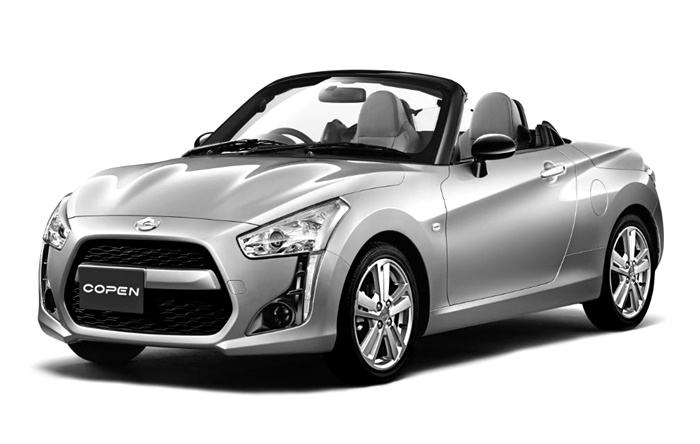
First ‘GR’ developed sportscar
The second generation continues to be on sale but now Toyota has adopted the model and got TOYOTA GAZOO Racing to further develop it. It is the first sportscar that is ‘GR’ developed, drawing on the knowledge and experience gained through TOYOTA GAZOO Racing’s motor sports activities.
The move is probably with strong ‘guidance’ from Toyota President, Akio Toyoda, who must like the little 2-seater convertible sportscar. Ever since becoming President, he has been trying hard to rekindle the passion for cars among the younger generation. So a car like the Copen GR Sport, as the model will be known, might attract interest, especially with a pricetag that starts (in Japan) from 2,380,000 yen (around RM92,000).
Enhanced driving dynamics
Toyota does not make minivehicles, leaving that segment to Daihatsu, so it has nothing like the Copen GR Sport in its line-up. But more importantly, its driving dynamics have been enhanced by Toyota GAZOO Racing so it would be even more appealing and satisfying to the enthusiast driver.
Specifically, development has focused on body rigidity and suspension tuning. Optimal body rigidity balance has been achieved by adding the front brace and changing the shape of the centre brace. The suspension spring rate was optimized for the body rigidity, requiring time and effort and in combination with a dedicated shock absorber, a smooth ride with supple movement, and the feeling of the tyres gripping the ground was pursued. The BBS forged-aluminium wheels are exclusively designed for the Copen GR Sport.
In addition, the electric power steering is specially tuned for the Copen GR Sport, taking into account its size and weight (980 kgs). The aim of the engineers has been ‘ to offer the pleasure of being able to use the engine power to the max because it is a minivehicle, and the superior comfort of controlling the vehicle at will, which is like a lightweight sportscar in everyday life’.
The engine is the same type as in the Daihatsu Copen, a 660 cc 3-cylinder long-stroke unit powering the front wheels. With turbocharging and an intercooler, the power output is 64 ps/92 Nm and customers can choose to have a 5-speed manual transmission or a 7-speed CVT.
Design prioritizes functionality
The front face uses the ‘Functional MATRIX’ grille, which is the GR icon, with horizontal and vertical elements key to the design. A large opening lower grille contributes to improved cooling performance and an under-spoiler-shaped front bumper contributes to improved driving performance while emphasizing the low centre of gravity and wide and low styling. Aerodynamic performance was improved by rectifying the air by extending the bumper side and setting the front bumper air outlet.
The interior (only available in black) features special Recaro seats and dedicated self-lighting triple meters. A special piano black-toned decorative centre cluster creates a sophisticated atmosphere. In addition, the powered Active Top roof is standard equipment so every owner can enjoy topless motoring.
As a GR model, the Copen GR Sport will obviously be at Toyota dealerships in Japan with the GR Garage, a retail feature intended to create a regular ‘hangout’ for sportscar enthusiasts and car fans. Outside Japan, the only country that currently has such a concept is Malaysia, so it is possible that we will see the Copen GR Sport alongside the new Supra.
© Copyright – Piston.my 2024 Trademarks belong to their respective owners. All rights reserved